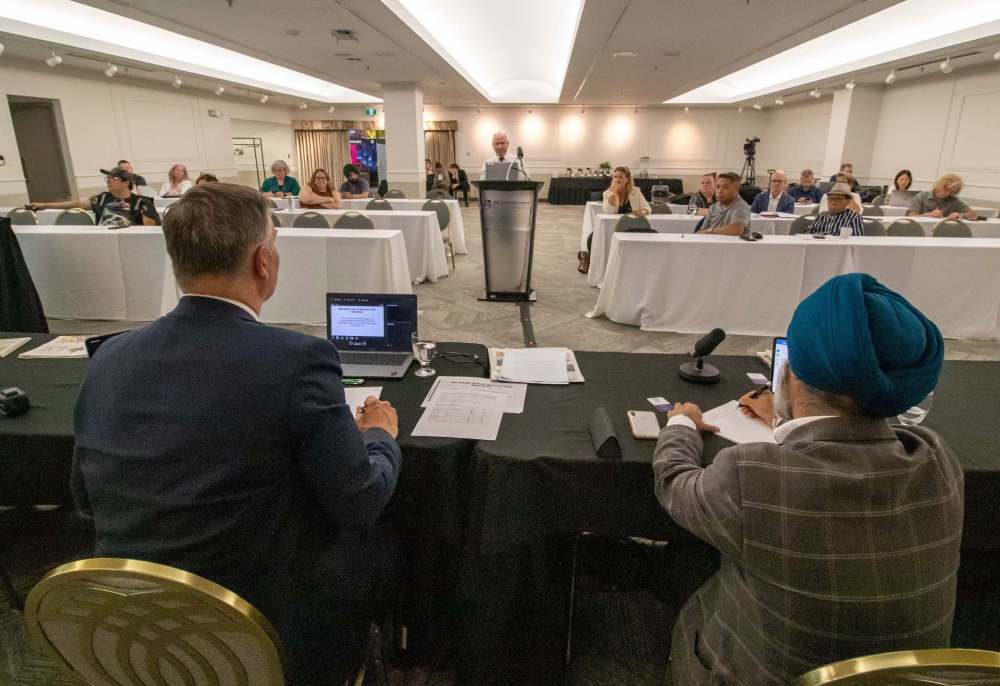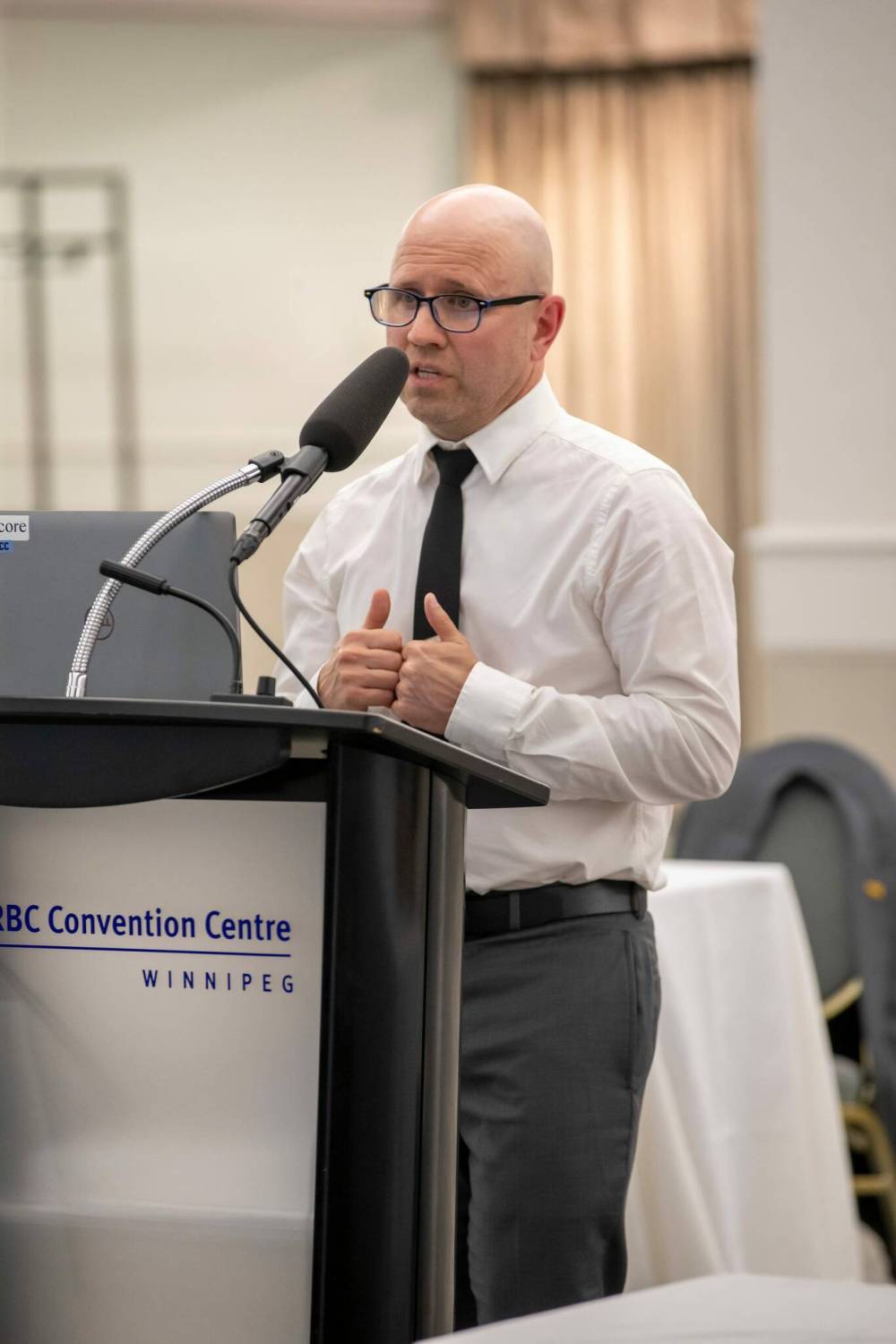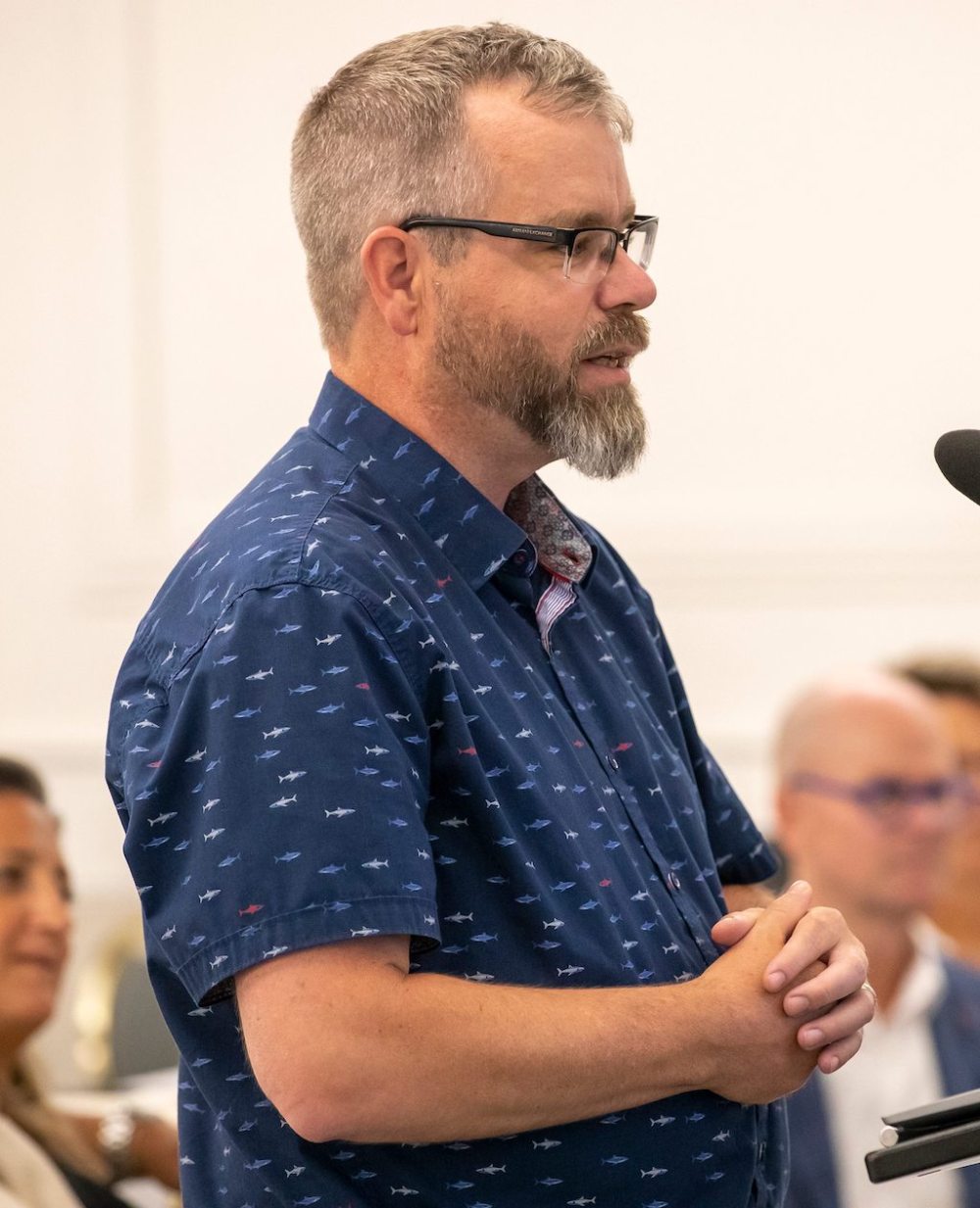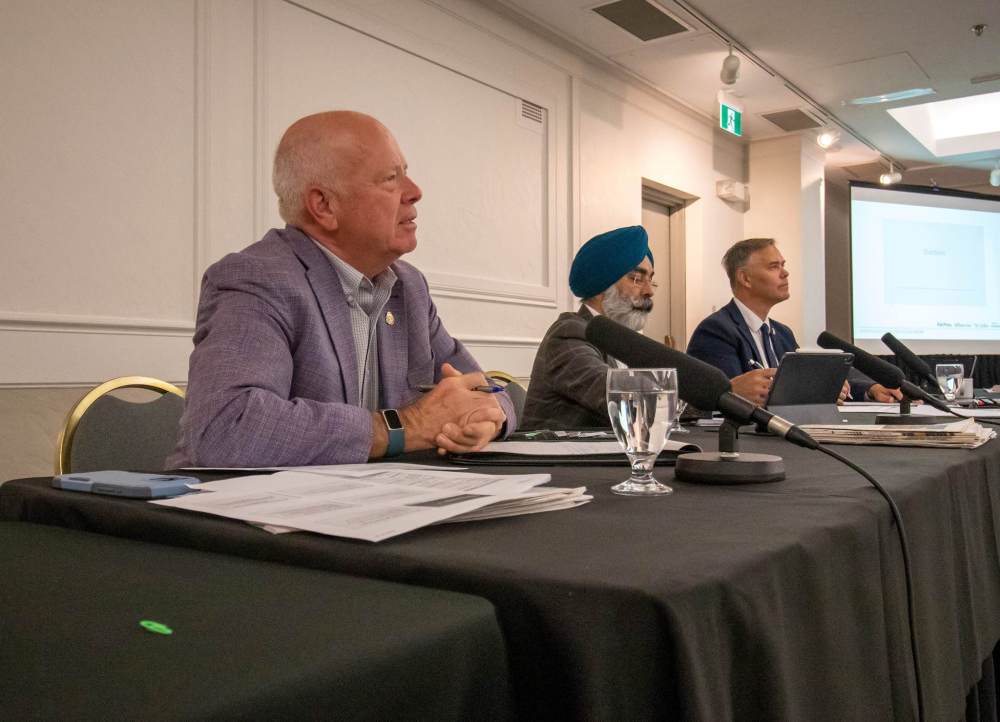Manitoba urged to earmark 25 per cent of ad budget on local journalism
Advertisement
Read this article for free:
or
Already have an account? Log in here »
To continue reading, please subscribe:
Monthly Digital Subscription
$0 for the first 4 weeks*
- Enjoy unlimited reading on winnipegfreepress.com
- Read the E-Edition, our digital replica newspaper
- Access News Break, our award-winning app
- Play interactive puzzles
*No charge for 4 weeks then price increases to the regular rate of $19.00 plus GST every four weeks. Offer available to new and qualified returning subscribers only. Cancel any time.
Monthly Digital Subscription
$4.75/week*
- Enjoy unlimited reading on winnipegfreepress.com
- Read the E-Edition, our digital replica newspaper
- Access News Break, our award-winning app
- Play interactive puzzles
*Billed as $19 plus GST every four weeks. Cancel any time.
To continue reading, please subscribe:
Add Free Press access to your Brandon Sun subscription for only an additional
$1 for the first 4 weeks*
*Your next subscription payment will increase by $1.00 and you will be charged $16.99 plus GST for four weeks. After four weeks, your payment will increase to $23.99 plus GST every four weeks.
Read unlimited articles for free today:
or
Already have an account? Log in here »
Manitoba has been advised to follow Ontario’s lead by dedicating 25 per cent of its advertising budget to local publications, to help fund journalism since digital giants have swiped much of their revenue.
“This made an immediate and meaningful difference to many news titles (in Ontario),” Paul Deegan, president and CEO of News Media Canada, told an all-party committee of the legislature in Winnipeg Wednesday.
Last year, Ontario Premier Doug Ford directed his government to spend 25 per cent of its advertising budget on local publications to bolster community journalism.
BROOK JONES / FREE PRESS Free Press vice-president Christian Panson speaks to the Manitoba Government's All-Party Journalism Committee during its public consultation at the RBC Convention Centre in Winnipeg, Wednesday.
“For generations — all the way back to the founding of the Halifax Gazette in 1752 — government advertising had been an important source of revenue for news businesses. In recent years, this has waned considerably… Where did the money go? Largely to American tech giants like Google, Facebook/Instagram, Snapchat, Apple, and X (Twitter),” said Deegan, who travelled to Winnipeg from Toronto to appear in person on behalf of the national association of print and digital news media from each province and territory.
The provincial government and its Crown corporations — Manitoba Hydro, Manitoba Public Insurance, Manitoba Liquor and Lotteries and Efficiency Manitoba — spend money to advertise public information campaigns, public hearings, health advisories and consumer programs, among other things.
On Wednesday, 18 presenters spoke at three sessions. Christian Panson, vice-president of digital and technology at the Free Press, and Greg Vandermeulen, editor of the Steinbach Carillon, were among those who lobbied for dedicated funding.
BROOK JONES / FREE PRESS Panson told the committee online platforms don’t invest in Manitoba. “We do.”
Panson recommended the provincial government redirect advertising spending from foreign platforms to local media outlets.
“These mega news platforms do not invest in Manitoba. We do,” Panson told the panel.
He called for a tax credit to be issued to local businesses that advertise with qualified Manitoba media companies.
Deegan said Quebec has instituted such a tax credit.
“It’s probably the most efficient thing you can do,” he said.
Panson advised that a program should be created to fund the hiring of journalists to cover communities that are underserved.
“Whether these are linguistics, linguistic, cultural or geographic news deserts, these communities deserve to have their stories told,” he said.
The committee was established to consult with Manitobans about rural, northern and cultural media such as French, Filipino, Punjabi and Chinese language publications.
New Democrat MLA Robert Loiselle chairs the committee that includes three other government MLAs — Diljeet Brar, Jennifer Chen and Eric Redhead — and three Progressive Conservative MLAs: Greg Nesbitt, Richard Perchotte and Konrad Narth.
Deegan said there are 31 community newspapers in Manitoba, which is a significant drop from 48 publications just seven years ago.
He said the government would benefit by advertising in community and ethnic newspapers because they more effectively reach specific audiences that trust their local news source.
Greg Vandermeulen, who has been the editor of the Steinbach Carillon since 2019, detailed the impact of its reporting in southeast Manitoba.
BROOK JONES / FREE PRESS The Carillon Editor Greg Vandermeulen speaks to the committee.
The newspaper, which was founded in 1946, covers more than a dozen municipalities and is the largest rural weekly in the province.
“We’re a safe place to access information in a sea of misinformation,” Vandermeulen said. “Our impact is noticed.”
Vandermeulen says he’s not pessimistic about the future of local media and with a little bit of help from the province, journalism in Manitoba can be sustained.
A government spokesperson told the Free Press the majority of its advertising is spent in local markets. In the fiscal year that ended March 31, 2025, 77 per cent of the total budget for advertising, including from Crown corporations, was spent on local print, radio, television, billboards, and transit ads, while 23 per cent was spent on digital and social media ads.
Following the presentations, Loiselle called the requests fair.
“I think the whole question of how we can maybe redirect some ad monies to better support local media is a great way of advancing forward… If they can do it in Quebec, if they can do it in Ontario, then maybe we might be able to do it in little old Manitoba,” he said.
Committing 25 per cent of the ad budget to local publications is a good starting point, the MLA added.
BROOK JONES / FREE PRESS The All-Party Journalism Committee members Greg Nesbitt (left), MLA for Riding Mountain, Diljeet Brar, MLA for Burrows and committee chair Robert Loiselle, MLA for St. Boniface.
The committee is due to issue its report by the end of October.
The hearing was the first consultation after the meeting scheduled for Gimli on June 26 was cancelled because no one had registered.
So many people signed up to speak Wednesday in Winnipeg that the government added another session during the day.
Public hearings are planned for Brandon on July 7, and Winkler on July 11. A virtual online session is being held for Thompson and northern Manitoba on July 8.
In 2019, the federal government instituted a refundable tax credit on salaries or wages paid to eligible newsroom employees, and offered a 15 per cent non-refundable personal income tax credit for qualifying digital news subscriptions.
nicole.buffie@freepress.mb.ca

Nicole Buffie
Multimedia producer
Nicole Buffie is a reporter for the Free Press city desk. Born and bred in Winnipeg, Nicole graduated from Red River College’s Creative Communications program in 2020 and worked as a reporter throughout Manitoba before joining the Free Press newsroom as a multimedia producer in 2023. Read more about Nicole.
Every piece of reporting Nicole produces is reviewed by an editing team before it is posted online or published in print — part of the Free Press‘s tradition, since 1872, of producing reliable independent journalism. Read more about Free Press’s history and mandate, and learn how our newsroom operates.
Our newsroom depends on a growing audience of readers to power our journalism. If you are not a paid reader, please consider becoming a subscriber.
Our newsroom depends on its audience of readers to power our journalism. Thank you for your support.
History
Updated on Wednesday, July 2, 2025 9:40 PM CDT: Adds photos







